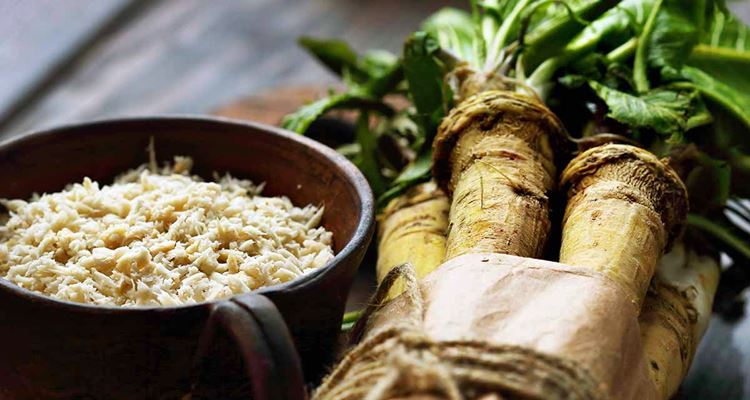Here are some details about horseradish and some benefits it can bring to the body.
HORSERADISH – These are the benefits and nutrition of horseradish, how it is used in cooking, and other things.
A horseradish may not be as famous as carrots and others but this root vegetable is actually been used for thousands of years already – medicinally and as a condiment. This root has a wide range of health benefits.

This vegetable is a cruciferous vegetable, the same group as mustard, wasabi, cabbage, broccoli, and kale. This plant has long, white roots, and green leaves. When you cut the root, a compound called sinigrin is broken down by an enzyme and it turns into mustard oil.
The root can also be grated and preserved using vinegar, salt, and sugar and is called prepared horseradish, a condiment. The leaves are also edible.
The prepared and sauce types of this root vegetable are not similar but are combined along with cream, sour cream, or mayonnaise creating a milder and creamier taste.
The condiment from this may be used in meat or fish but in minimum amounts. One downside of using this it can irritate the mouth, nose, or stomach if consumed in unreasonable amounts because of the root’s spiciness. It may greatly affect people with stomach ulcers, digestive issues, or inflammatory bowel disease.
According to FoodData Central, one tablespoon (15 grams) of prepared type has the following:
- Calories: 7
- Protein: less than 1 gram
- Fat: less than 1 gram
- Carbs: 2 grams
- Fiber: 0.5 gram
It also has small amounts of calcium, potassium, magnesium, folate, and other micronutrients.
Here are the potential health benefits of this:
- It may have anti-cancer properties due to its glucosinolates and isothiocyanates. These two can inhibit the growth of cancer cells and eventually kill them.
- Its compound sinigrin may also act as an antioxidant and prevent damage caused by free radicals.
- It can have antibacterial properties because of its allyl isothiocyanate. The allyl isothiocyanate is the oil produced when the root is cut. It can go against certain bacteria like E. coli, H. pylori, and Salmonella.
- It may help relieve colds and some breathing issues.
READ ALSO:
- Azelaic Acid – Uses, Benefits, and Possible Side Effects Of Azelaic Acid
- Ginger Tea Benefits – What Are The Health Benefits Of Ginger Tea?
What can you say about this? Let us know!

